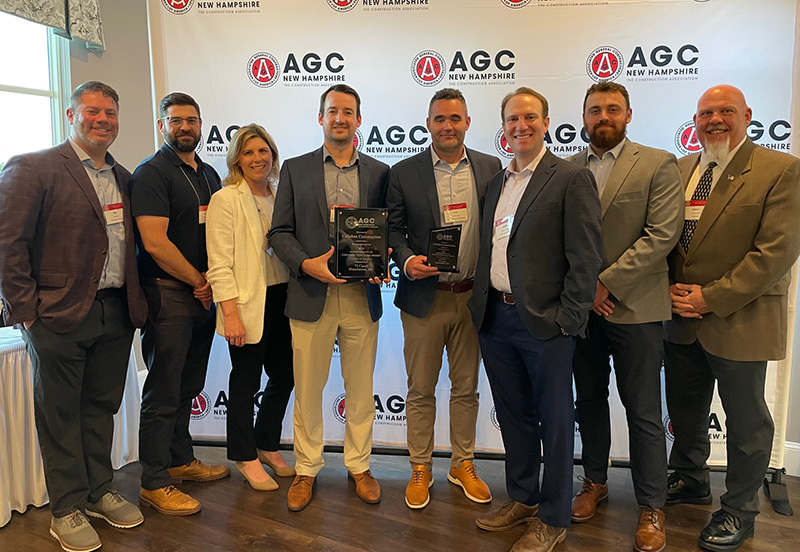News: Construction Design & Engineering
Posted: January 16, 2014
Participating mortgages for commercial real estate: by William Jenczyk, DiCicco, Gulman & Co.
Securing a commercial real estate mortgage is not an easy proposition. Many factors have to be considered in making the right borrowing decision; risk profile, interest rate sensitivity, financial depth and investing intentions all must be considered when seeking a lending relationship.
A participating mortgage can offer a compromise that allows owners to secure manageable loans on more challenging projects, mitigate ownership risk while allowing lenders to assume some of the upside potential of a successful project.
How Does a Participating Mortgage Work?
In a participating mortgage, a lender typically offers the loan at a reduced interest rate, in exchange for a portion of the cash flow from the property, in addition to the regular mortgage payment. In a participating mortgage, the lender usually shares in the success of the project in one of two ways, or in combination. The lender may receive a one-time payment upon sale of a portion of the proceeds after the owner sells the property. The lender may also receive a percentage of the operating cash flow generated by the property as long as the property is operating above a determined threshold. For example, if the mortgage is for an apartment complex, the owner may pay a portion of the sales proceeds to the lender upon sale, a percentage of the operating cash flow, adjusted by additional investments into the property and other similar expenditures, periodically, or some combination of the two.
Owners like participating mortgages because they provide them with the opportunity to secure a loan that might not have been available due to the risk profile of the project. Lenders might be interested in a participating mortgage because they have the opportunity to share in the success of the project, both on an ongoing basis (operating cash flow) and upon sale (share in sales proceeds). In essence, the lender assumes additional risk on their loan in exchange for the opportunity to share in the ultimate success of the project. On the surface, it seems like a perfect setup for properties with the right risk profile. But participating mortgages can come with challenges, particularly for first-time owners who don't fully understand the additional rights that the lender has under this arrangement.
Mistakes Owners Make
The most egregious mistake owners make with participating mortgages is underestimating the complications inherent in this type of a loan. Owners tend to think of a mortgage as a relatively simple agreement, and that is simply not the case with a participating mortgage. Some owners, in an effort to save costs, may forgo including their accountants and other business advisors in a review of the agreement, missing opportunities to structure the agreement to save future costs or to reduce the amount of input the lender has in the day to day operations of the property.
An expert review can help owners understand exactly what it is they're agreeing to, what their rights and responsibilities are, and whether or not the deal is equitable. Without a review, the owner could end up making financial projections for the property that aren't realistic, which then leads to problems down the line. Effective cash flow forecasting and proper evaluation of the profitability of the property is important to predicting accurate results. Owners should also plan for taxes and how they're affected by the agreement.
Another unfortunate mistake made by first-time owners is not taking the time to understand the lender's role in the management of the property itself. Legally, the title to the property remains that of the owner, but the lender may still be able to take on some of the rights and responsibilities of a partner. Because the lender has a greater stake in the success of the property they often take a greater interest in the day-to-day operations of the property. It's important to know upfront what rights the lender has when it comes to managing the property.
A participating mortgage is designed to provide a helpful solution to a tricky problem. Understanding all aspects of the agreement can help owners avoid issues down the road. Your legal and accounting team are an important component in making sure that property owners find the right financing for their project, and that they understand all of the rights and responsibilities they have in any lending arrangement.
William Jenczyk, CPA is a principal in the real estate group at DiCicco, Gulman & Co., Woburn, Mass.
MORE FROM Construction Design & Engineering
Nobis Group awards Robinson and Moreira STEM scholarships
Concord, NH Nobis Group, a 100% employee-owned consulting firm specializing in engineering and environmental solutions across the Northeast, has named the recipients of its 2025 STEM Scholarship: Andie Moreira of

Quick Hits
Columns and Thought Leadership

Ask the Electrician: Is summer a prime time for commercial electrical maintenance?
The answer is “Yes!” While January marks the official new year, many businesses view September as a fresh start. This makes summer an ideal time for commercial property owners to schedule long-term electrical maintenance projects.

The rise of incubators and co-working spaces: The latest in life sciences - by Matt Combs
In recent years, the life science industry has witnessed a shift in how companies operate and innovate. One of the key driving forces behind this transformation is the emergence of incubators and co-working spaces specifically tailored to meet the unique budget and schedule needs of startups.

The design-build advantage: Integrated interior design solutions - by Parker Snyder
When it comes to corporate interior spaces for both commercial and industrial projects, partnering with a design-build firm with in-house interior design services can offer clients many benefits. Unlike traditional delivery methods where interior designers operate independently from the design and construction teams, often creating a longer project timeline as cost negotiations and revisions ensue

Careers in Construction Month focus on training and safety - by Joe Camilo
October is Careers in Construction Month, and rarely has it been more consequential. According to our chapter’s national parent organization, the construction industry needs to attract half-a-million new workers in the coming year to meet demand. Addressing that need is a huge job, but we at ABC MA are trying to do our part.







.png)